
by Ria Olivier | Mar 22, 2020 | SA Agulhas II, SANAP, Science, Southern Ocean
The Mid-Month series final for March is reflecting on Science projects on Sunday. The Sound and Vibration Research Group (SVRG) in the Department of Mechanical and Mechatronic Engineering is a SANAP research project. The SVRG has established expertise, equipment and laboratory facilities to conduct research and investigations into noise and vibration problems for industry as well as the public sector. Our primary field of research is associated with human response to sound and vibration where, in particular, seating dynamics and sound quality are investigated. Prof Annie Bekker is the Principal Investigator of the South African National Antarctic Programme (SANAP) – Decision aiding for the SA Agulhas II through modelling, monitoring and data capture.
is a SANAP research project. The SVRG has established expertise, equipment and laboratory facilities to conduct research and investigations into noise and vibration problems for industry as well as the public sector. Our primary field of research is associated with human response to sound and vibration where, in particular, seating dynamics and sound quality are investigated. Prof Annie Bekker is the Principal Investigator of the South African National Antarctic Programme (SANAP) – Decision aiding for the SA Agulhas II through modelling, monitoring and data capture.
Vibration and acoustic comfort on the polar supply and research vessel – S.A. AGULHAS II
 As part of an international research consortium between the Universities of Aalto and Oulo, Aker Arctic, Det Norske Veritas, Rolls Royce, Wartsila and STX Europe the SVRG performed vibration comfort measurements on board the SA Agulhas II, the new polar supply research vessel. The SA Agulhas II was put to the test during two days of ice-breaking operations in the Bay of Bothnia in Finland during ice-trails as well as a 76-day voyage between Cape Town and Antarctica. Sound levels and vibration comfort will be determined in conjunction with exterior ice conditions and ice-loads on the ship hull in an on-going research project which enables a unique comparison between Arctic and Antarctic conditions.
As part of an international research consortium between the Universities of Aalto and Oulo, Aker Arctic, Det Norske Veritas, Rolls Royce, Wartsila and STX Europe the SVRG performed vibration comfort measurements on board the SA Agulhas II, the new polar supply research vessel. The SA Agulhas II was put to the test during two days of ice-breaking operations in the Bay of Bothnia in Finland during ice-trails as well as a 76-day voyage between Cape Town and Antarctica. Sound levels and vibration comfort will be determined in conjunction with exterior ice conditions and ice-loads on the ship hull in an on-going research project which enables a unique comparison between Arctic and Antarctic conditions.
One of SVRG objectives is to establish a centre of expertise in sound and vibration measurement, analysis and assessment with the associated measurement equipment and software tools to contribute to the international research arena. Annie Bekker host an annual Symposium on the S.A. Agulhas II where international and national stakeholders give new insight and feedback on research. During the symposium students of the SVRG also get the time to present their research. To open the minds of these students and to taught them the necessary skills Annie Bekker make use of expertise from all over the world.
assessment with the associated measurement equipment and software tools to contribute to the international research arena. Annie Bekker host an annual Symposium on the S.A. Agulhas II where international and national stakeholders give new insight and feedback on research. During the symposium students of the SVRG also get the time to present their research. To open the minds of these students and to taught them the necessary skills Annie Bekker make use of expertise from all over the world.
SVRG recently hosted Professor Anders Brandt from the University of Southern Denmark.
“ABRAVIBE(s)”… data-driven skills, taught by a master

Prof A Brandt
He is the author of the book “Noise and Vibration Analysis” and the MATLAB Toolbox, “ABRAVIBE” – renowned for its open code which demystifies many aspects of signal processing. Professor Brandt up-skilled students from the SVRG in select topics related to data quality control and signal processing. Three days were spent on a deep dive into theory, balanced by practical application. An essential skill of any vibration engineer is “to know how to hit a structure with a hammer”.
aspects of signal processing. Professor Brandt up-skilled students from the SVRG in select topics related to data quality control and signal processing. Three days were spent on a deep dive into theory, balanced by practical application. An essential skill of any vibration engineer is “to know how to hit a structure with a hammer”.
Under the leadership of Prof Annie Bekker, the SVRG will apply their brushed-up techniques to implement several data-driven digital services for the SA Agulhas II, South Africa’s polar supply and research vessel. The collective effort, entitled “DIGSAA” embraces Industry 4.0 technologies to enhance ship management and operation in the Southern Ocean and Antarctica. Accordingly, the visit of Prof Brandt has instilled a rigorous signal processing background to equip the group for this momentous task.

Prof Brandt and SVRG ready to work. Front (l-r): Karl Pferdkamper, Jandre Mouton, Ben Steyn. Middle: Jaco Laas, Armand van Zuydam, Martinique Engelbrecht, Prof Bekker, Prof Brandt, Nic Bunn, Nicole Taylor, Jesslyn Bossau. Back: Christof van Zijl and Brendon Nickerson.

Professor Brandt, shares how a modal hammer is used to measure calibrated acceleration responses on this beam structure. Jaco Laas, M.Eng (left) and Brendon Nickerson, PhD (right).

Ben Steyn (M.Eng) is perfecting hammer skills on an experimental set up.

Celebrating a successful week of signal processing and modal analysis.

by Ria Olivier | Mar 21, 2020 | Research, SANAP, SANAP Student, Science, Southern Ocean, Women in Science
Every year new students are joining the South African National Antarctic Programme(SANAP). As Saturday is probably the time to break from studies, our first “Saturday Student” in the Mid-Month series is Kolisa Yola Sinyanya or for those who are familiar with Twitter, @Kolie_Yola. I think there are not many students out there with 7070 followers (during writing of this article) – but Kolisa does. She joined the Antarctic Legacy of South Africa (ALSA) Project and contributes towards our social media campaign, therefore letting more people know about South Africa’s involvement in the Antarctic and Southern Ocean region. Upon joining ALSA, Kolisa was set to be part of the South African group to attend the SCAR biennial conference in August 2020 in Hobart, Australia(but now cancelled).
probably the time to break from studies, our first “Saturday Student” in the Mid-Month series is Kolisa Yola Sinyanya or for those who are familiar with Twitter, @Kolie_Yola. I think there are not many students out there with 7070 followers (during writing of this article) – but Kolisa does. She joined the Antarctic Legacy of South Africa (ALSA) Project and contributes towards our social media campaign, therefore letting more people know about South Africa’s involvement in the Antarctic and Southern Ocean region. Upon joining ALSA, Kolisa was set to be part of the South African group to attend the SCAR biennial conference in August 2020 in Hobart, Australia(but now cancelled).
 She is a PhD candidate in Oceanography at the University of Cape Town (UCT). Her PhD research is part of a growing body of work that critically examines bio-geochemical cycling in the ocean, particularly regions that are currently under-sampled. The research aims involve exploring phytoplankton community dynamics and microbe-nutrient interactions in the Indian Ocean, including subtropical and Southern Ocean waters. To date, Kolisa has been awarded the Advancing Womxn Fellowship in the Department of Oceanography awarded under the “For womxn by womxn: conducting research in a field in which womxn are in short supply” category of a new initiative at UCT championed by the Office of the Vice-Chancellor. She is one of the researchers who were on 5-week cruise to Marion Island in the Sub-Antarctic Indian Ocean in 2017.
She is a PhD candidate in Oceanography at the University of Cape Town (UCT). Her PhD research is part of a growing body of work that critically examines bio-geochemical cycling in the ocean, particularly regions that are currently under-sampled. The research aims involve exploring phytoplankton community dynamics and microbe-nutrient interactions in the Indian Ocean, including subtropical and Southern Ocean waters. To date, Kolisa has been awarded the Advancing Womxn Fellowship in the Department of Oceanography awarded under the “For womxn by womxn: conducting research in a field in which womxn are in short supply” category of a new initiative at UCT championed by the Office of the Vice-Chancellor. She is one of the researchers who were on 5-week cruise to Marion Island in the Sub-Antarctic Indian Ocean in 2017.
Kolisa has a passion for learning science and for sharing her science, and her PhD has allowed Kolisa to engage  in effective science communication through public speaking, scientific writing and television features. In February of 2020, she presented one of her PhD chapters at Ocean Sciences Meeting in San Diego, USA. Towards the end of 2019, the new Advancing Womxn: Ocean Womxn Fellowship at UCT recruited Kolisa to run and manage their social media accounts as a science communicator. She was one of the invited African scientists who gave ocean and climate change related talks at #VirtualBlueCOP25. In the same year Kolisa was nominated as one of the Inspiring Fifty Women in STEM South Africa and became a Black Women in Science South Africa 2019 fellow. Kolisa was the first PhD candidate in history to be selected by the Oceanography Department’s head of department (HoD), Professor Isabelle Ansorge to stand in for her as acting HoD at a departmental graduation ceremony in 2019.
in effective science communication through public speaking, scientific writing and television features. In February of 2020, she presented one of her PhD chapters at Ocean Sciences Meeting in San Diego, USA. Towards the end of 2019, the new Advancing Womxn: Ocean Womxn Fellowship at UCT recruited Kolisa to run and manage their social media accounts as a science communicator. She was one of the invited African scientists who gave ocean and climate change related talks at #VirtualBlueCOP25. In the same year Kolisa was nominated as one of the Inspiring Fifty Women in STEM South Africa and became a Black Women in Science South Africa 2019 fellow. Kolisa was the first PhD candidate in history to be selected by the Oceanography Department’s head of department (HoD), Professor Isabelle Ansorge to stand in for her as acting HoD at a departmental graduation ceremony in 2019.
 She has taken part in several science communication activities, including FameLab Cape Town, the biggest science communication competition in the world, where she was the Cape Town national runner up. Other thought- and conversation-provoking science communication engagements in which Kolisa has participated in are Pint of Science South Africa and TEDxUCT. Moreover, she presented the preliminary findings of her Agulhas System Climate Array (ASCA) research at the 2018 SANAP Symposium. Kolisa’s work has also been documented in the academic communication magazine, The Conversation Africa. She’s committed to increasing the visibility of women in STEM and runs a blog called Women In Science Hub where she write about conversations she has with women who are making waves in the world of STEM. In 2018, Kolisa had the privilege to be interviewed as a woman in science under the theme “#SHEsInSTEM” by the women’s organisation, Young&BosSHE, based in the United States. In 2019, her sci comm work was featured by Crastina in Sweden under the theme Science Communication Africa. As a student leader, she was invited by the Vice-Chancellor of the University of Cape Town, Professor Mamokgethi Phakeng, to participate in a Women’s Day discussion on Power FM about South African universities. In 2019 she was invited for live interviews twice by Cape Town TV to speak about Oceanography and on Women’s Month to speak about being a black woman in STEM. Visit Kolisa’s budding YouTube channel and leave a comment.
She has taken part in several science communication activities, including FameLab Cape Town, the biggest science communication competition in the world, where she was the Cape Town national runner up. Other thought- and conversation-provoking science communication engagements in which Kolisa has participated in are Pint of Science South Africa and TEDxUCT. Moreover, she presented the preliminary findings of her Agulhas System Climate Array (ASCA) research at the 2018 SANAP Symposium. Kolisa’s work has also been documented in the academic communication magazine, The Conversation Africa. She’s committed to increasing the visibility of women in STEM and runs a blog called Women In Science Hub where she write about conversations she has with women who are making waves in the world of STEM. In 2018, Kolisa had the privilege to be interviewed as a woman in science under the theme “#SHEsInSTEM” by the women’s organisation, Young&BosSHE, based in the United States. In 2019, her sci comm work was featured by Crastina in Sweden under the theme Science Communication Africa. As a student leader, she was invited by the Vice-Chancellor of the University of Cape Town, Professor Mamokgethi Phakeng, to participate in a Women’s Day discussion on Power FM about South African universities. In 2019 she was invited for live interviews twice by Cape Town TV to speak about Oceanography and on Women’s Month to speak about being a black woman in STEM. Visit Kolisa’s budding YouTube channel and leave a comment.
 Kolisa is also a fun loving, unconventional and free-spirited woman who has a passion for advancing the lives of others, especially young women and girls from all walks of life. Her message to fellow students:
Kolisa is also a fun loving, unconventional and free-spirited woman who has a passion for advancing the lives of others, especially young women and girls from all walks of life. Her message to fellow students: 
- Believe in your contributions because no one else is like you, you bring to the table a combination of things the next person will not.
- Be in love with and have passion for your career because if you don’t your path within that career will be a chore.
- Never give up because winners never quit, and quitters never win.
- Go for your dreams. Never let anything/anyone discourage you from reaching and far surpassing those set goals.

by Ria Olivier | Mar 20, 2020 | Antarctica, Discover, Environment, SANAE, SANAP, SEAmester, Take-Over Operations
Our mid-Month Series also include those people that has become part of the SANAP community and do a lot of  freelance and volunteer work for SANAP. Alexander Oelofse is becoming a well-known name within the SANAP community. His videos of SEAmester give a real insight to the SEAmester program. ALSA
freelance and volunteer work for SANAP. Alexander Oelofse is becoming a well-known name within the SANAP community. His videos of SEAmester give a real insight to the SEAmester program. ALSA  realized that as freelancer he can be of great service to the community and to ALSA. During the Departure of SANAE59 an agreement was reached to compile videos during takeover. Ria Olivier met with him after his expedition at Iziko during the Sentinels of the South exhibition launch and possibilities were discussed of his contributions toward the Antarctic legacy of our country.
realized that as freelancer he can be of great service to the community and to ALSA. During the Departure of SANAE59 an agreement was reached to compile videos during takeover. Ria Olivier met with him after his expedition at Iziko during the Sentinels of the South exhibition launch and possibilities were discussed of his contributions toward the Antarctic legacy of our country.
ALSA asked him when he got interested in photography?
What started off as a childhood dream turned into a reality on the 2019/2020 Antarctic relief voyage. I have always had a deep love for the ocean and knew from a young age  that I would want to be in, or surrounded, by the ocean as much as possible. I wanted to study marine biology for a long time. Until job shadowing a marine biologist and realising much of the work would be lab-based. I couldn’t imagine that for myself. I then decided to pursue my other passion; photography. Being a member of the photographic society in high school sparked my interest. This led to me studying fine art photography at Michaelis in Cape Town. At Michaelis, I continued to create art centering around the environment.
that I would want to be in, or surrounded, by the ocean as much as possible. I wanted to study marine biology for a long time. Until job shadowing a marine biologist and realising much of the work would be lab-based. I couldn’t imagine that for myself. I then decided to pursue my other passion; photography. Being a member of the photographic society in high school sparked my interest. This led to me studying fine art photography at Michaelis in Cape Town. At Michaelis, I continued to create art centering around the environment.
How did he become involved in SANAP?
 While at University I already started trying to find a way onboard the S.A. Agulhas II. I had to see this stark, extreme and yet breathtakingly beautiful landscape for myself. It took a few years of applying, without succeeding, until I could get onboard the SEAmester III as a lecturer after my studies. Onboard students from various universities around South Africa get the opportunity to experience oceanographic research at its best, out in the field, onboard the S.A. Agulhas II. To have the privilege to experience SEAmester as a student must be absolutely amazing, but more importantly, the eye-opening experience that can lead some students to follow their passions in the marine studies field.
While at University I already started trying to find a way onboard the S.A. Agulhas II. I had to see this stark, extreme and yet breathtakingly beautiful landscape for myself. It took a few years of applying, without succeeding, until I could get onboard the SEAmester III as a lecturer after my studies. Onboard students from various universities around South Africa get the opportunity to experience oceanographic research at its best, out in the field, onboard the S.A. Agulhas II. To have the privilege to experience SEAmester as a student must be absolutely amazing, but more importantly, the eye-opening experience that can lead some students to follow their passions in the marine studies field.
Opportunity to go to Antarctica:
After doing two SEAmester Expeditions the opportunity came up to go down to Antarctica with UCT. He grabbed the opportunity with both hands.  He departed on the first leg of the relief voyage of 2019/2020. I can’t really say I had any expectations, to be frankly honest. AS he has never seen a place like the Antarctica and not having any expectations, it lead to some of his best experiences. He admits that sailing down for 9 days to reach the ice shelf definitely adds to the anticipation and the surprise that is Antarctica. Visit his website to see his collection of Antarctic Images
He departed on the first leg of the relief voyage of 2019/2020. I can’t really say I had any expectations, to be frankly honest. AS he has never seen a place like the Antarctica and not having any expectations, it lead to some of his best experiences. He admits that sailing down for 9 days to reach the ice shelf definitely adds to the anticipation and the surprise that is Antarctica. Visit his website to see his collection of Antarctic Images
 “Seeing the ice shelf for the first time left me speechless. I became quite emotional, realising my dream had come true”.
“Seeing the ice shelf for the first time left me speechless. I became quite emotional, realising my dream had come true”.
 “One of my highlights was getting to sit on the back of a snowmobile and traverse the snowy landscapes. Being the passenger allowed me to, despite the icy breeze, absorb the sublime landscapes that we passed through. This image was captured at 02:00 am. You could see the sun dip ever so slightly but never setting. I could get used to that. It made life seem endless, like there was no rush”
“One of my highlights was getting to sit on the back of a snowmobile and traverse the snowy landscapes. Being the passenger allowed me to, despite the icy breeze, absorb the sublime landscapes that we passed through. This image was captured at 02:00 am. You could see the sun dip ever so slightly but never setting. I could get used to that. It made life seem endless, like there was no rush”
Alex Oelofse is looking forward to working alongside ALSA to inspire youth and spread the information about the amazing program that South Africa runs all the way down in Antarctica.
His contributions will soon be available on the ALSA archive and see in next Mid-Month series one of his videos.
All Images copyright Alexander Oelofse
Visit his website https://www.alexanderoelofse.com/ and Instagram

by Ria Olivier | Mar 18, 2020 | Discover, Jobs, Legacy, Marion Island, Research, SANAP, SCAR, Science
I completed all my science degrees at the University of Pretoria after some time at Wits studying law. I was fortunate to be appointed at Stellenbosch University in 2000, spent 2001 in France, and returned to Stellenbosch University in 2002 where I worked first as a Senior Technical Officer, then as a Researcher and finally an Associate Professor before relocating to the University of Johannesburg in 2011,  and became a Full Professor in 2012. Our research group at UJ transitioned into a Research Centre, and we currently house a number of postdoctoral fellows and postgraduate students. We have collaborations with a number of groups both within South Africa, and internationally.
and became a Full Professor in 2012. Our research group at UJ transitioned into a Research Centre, and we currently house a number of postdoctoral fellows and postgraduate students. We have collaborations with a number of groups both within South Africa, and internationally.
I have been involved in research on the Prince Edward  Islands since 2004 and have been fortunate to work with some of the legends as well as bright upcoming researchers (then students, now fully established and leading their own research groups). For my sins, I was appointed as Chief shore-based Scientist in 2006 (the first time that a woman held this position), and managed to get all people to relevant huts on time, even though we almost had to put together a rescue party to retrieve Valdon Smith and Sarette Slabber from Mixed Pickle (typical Marion Island bad weather meant that they could not walk over Azorella Kop). Thankfully the weather cleared, and all shore-based people made it back to the SA Agulhas I.
Islands since 2004 and have been fortunate to work with some of the legends as well as bright upcoming researchers (then students, now fully established and leading their own research groups). For my sins, I was appointed as Chief shore-based Scientist in 2006 (the first time that a woman held this position), and managed to get all people to relevant huts on time, even though we almost had to put together a rescue party to retrieve Valdon Smith and Sarette Slabber from Mixed Pickle (typical Marion Island bad weather meant that they could not walk over Azorella Kop). Thankfully the weather cleared, and all shore-based people made it back to the SA Agulhas I.
Bettine van Vuuren is currently the Chair of the South African National Committee for SCAR, and a Principal Investigator in the South African National Antarctic Programme (SANAP) – see Biocomplexity: Understanding biological patterns in space and time.
Why you love your career in science?
I have always thought that animals are interesting and wondered why they act in certain ways. Why do some dogs get on well, while others fight? How do bees know where to find  flowers and pollen, and how do they get back to their hives? Are they really all female? Why are some species so successful while others are continuously threatened and faced with extinction; especially considering that our world is changing much faster than ever before?
flowers and pollen, and how do they get back to their hives? Are they really all female? Why are some species so successful while others are continuously threatened and faced with extinction; especially considering that our world is changing much faster than ever before? 
Once I understood that the answers to most of these questions have a strong genetic basis, I was hooked. My work allows me to search for the answers to many of these questions, and I work in some of the most extraordinary and beautiful places on earth (from our hot and dry desert and semi-desert regions to extremely wet and cold sub-Antarctic islands). I am privileged to work and interact with extremely talented people (both within and outside South Africa; old and young); there is not a day that I am not thankful for the way my life turned out. What is perhaps the strongest motivating factor is that I can make a difference in the lives of younger people (through education, working at the University of Johannesburg), and this is priceless.
Why you believe more women should pursue a career in science?
The first thing to say is that I believe there is nothing that any person can’t do if they apply their mind (and time) to it. We often set our own ceilings based on the general beliefs that society  or others impose on us; and it is crucial that we break through these (non-real) boundaries. STEM fields are a case in hand. This is especially true for woman, who traditionally were considered homemakers or child-carers. In STEM specifically, fields such as mathematics, physics and engineering, and traditionally more field-based disciplines such as zoology, botany, or oceanography, are seen as more suited to men (either because women were not traditionally considered as analytically strong, capable to work in the field, or for that matter, be away from home for any period of time). It is critical that any person (both men and women) should carefully consider what they enjoy, what their specific strengths are (be that a STEM career for a woman, or as a child carer / homemaker for a man), and then pursue that with all their strength and passion. Personally, I was initially directed into a field that I had no interest in (because I could not answer questions asked regarding where I would work if my husband lived in a small town), and from a personal perspective I strongly urge and support woman that want to step out of the “beaten track”, i.e., what is typically expected from you by society, and follow what they are passionate about.
or others impose on us; and it is crucial that we break through these (non-real) boundaries. STEM fields are a case in hand. This is especially true for woman, who traditionally were considered homemakers or child-carers. In STEM specifically, fields such as mathematics, physics and engineering, and traditionally more field-based disciplines such as zoology, botany, or oceanography, are seen as more suited to men (either because women were not traditionally considered as analytically strong, capable to work in the field, or for that matter, be away from home for any period of time). It is critical that any person (both men and women) should carefully consider what they enjoy, what their specific strengths are (be that a STEM career for a woman, or as a child carer / homemaker for a man), and then pursue that with all their strength and passion. Personally, I was initially directed into a field that I had no interest in (because I could not answer questions asked regarding where I would work if my husband lived in a small town), and from a personal perspective I strongly urge and support woman that want to step out of the “beaten track”, i.e., what is typically expected from you by society, and follow what they are passionate about.
Latest research or study you’re working on?
 I am currently involved in a number of larger projects which aim to understand how species (individuals / populations) respond to change. One such project is on sub-Antarctic Marion Island (funded through the South African National Antarctic Programme), where we are assembling the full genomes of a number of macroinvertebrate species, with the ultimate aim to understand genes under selection, and how biotic and abiotic factors shape the genetic diversity on oceanic islands. In South Africa, and in collaboration with national (SANBI) and international partners (an NSF/NRF funded project), we are investigating how reptile species adapt to changing and transformed landscapes, and what the downstream impacts are on their genes, morphology and behaviour. Across the African continent, and in collaboration with the Research Centre in Biodiversity and Genetic Resources (Portugal), we are documenting the spatial genetic patterns in a number of economically important larger antelope species (such as roan- and sable antelope); our work here directly informs South African policies on translocations.
I am currently involved in a number of larger projects which aim to understand how species (individuals / populations) respond to change. One such project is on sub-Antarctic Marion Island (funded through the South African National Antarctic Programme), where we are assembling the full genomes of a number of macroinvertebrate species, with the ultimate aim to understand genes under selection, and how biotic and abiotic factors shape the genetic diversity on oceanic islands. In South Africa, and in collaboration with national (SANBI) and international partners (an NSF/NRF funded project), we are investigating how reptile species adapt to changing and transformed landscapes, and what the downstream impacts are on their genes, morphology and behaviour. Across the African continent, and in collaboration with the Research Centre in Biodiversity and Genetic Resources (Portugal), we are documenting the spatial genetic patterns in a number of economically important larger antelope species (such as roan- and sable antelope); our work here directly informs South African policies on translocations.

Student: Daniela Monsanto

Colleagues & Students at a conference
Students often ask me about their future careers, what they can do with a BSc degree (or broader, a Science degree), or where they will find employment. And my answer is always the same: You can be whatever you want to be. The ultimate aim of science education should be to train students to critically assess situations, to learn how to solve complex problems, and to find solutions to questions. If you have mastered this skill, you can become the President of South Africa, an artisan, an entrepreneur, or a brilliant scientist.
Presentation on Youtube: UJ zoologist on the management and eradication of invasive species
Profile on Wikipedia and on Researchgate
Follow Bettine on Twitter @bettinevv
Visit  website www.molzoolab.co.za
website www.molzoolab.co.za

by Ria Olivier | Mar 16, 2020 | Antarctica, Legacy, Research, SANAP, SCAR, Science, Uncategorised
To start off SANAP Mid-Month series we have Thulani Makhalanyane  as our first Monday Man.
as our first Monday Man.
Thulani Peter Makhalanyane was educated at the North West University  (Mafikeng Campus), where he completed a BSc (Hons) degree in Microbiology. He then moved to the University of the Western Cape to begin microbial ecology research, earning both an MSc degree at the Institute for Microbial Ecology and Genomics in the Department of Biotechnology (obtained cum laude, 2010) and PhD (2013).
(Mafikeng Campus), where he completed a BSc (Hons) degree in Microbiology. He then moved to the University of the Western Cape to begin microbial ecology research, earning both an MSc degree at the Institute for Microbial Ecology and Genomics in the Department of Biotechnology (obtained cum laude, 2010) and PhD (2013).
Dr Makhalanyane is a lecturer in the Department of Genetics. His lectures to third-year students are in the fields of phylogenetics and microbial ecology. He also serves as a Young Ambassador for the International Society for Microbial Ecology (ISME), Reviews Editor for Frontiers in Microbiology and currently Guest Associate Editor for the Terrestrial Microbiology section.
Why you love your career in science?
 There are very few careers which allow you to generate new knowledge and acquire new insights on a daily basis. Working as a scientist allows me to be at the very cutting edge of knowledge generation
There are very few careers which allow you to generate new knowledge and acquire new insights on a daily basis. Working as a scientist allows me to be at the very cutting edge of knowledge generation  within my field. I love being able to work in a team of scientist working on exciting projects. I get to mentor a range of students, from undergraduates to PhD, all with unique perspectives and insights. As a SANAP researcher, my work allows me access to unique study sites and locations and allows me to work on topics very few people have access to.
within my field. I love being able to work in a team of scientist working on exciting projects. I get to mentor a range of students, from undergraduates to PhD, all with unique perspectives and insights. As a SANAP researcher, my work allows me access to unique study sites and locations and allows me to work on topics very few people have access to.
Latest research or study you’re working on;
We have several exciting ongoing studies. These questions aim to go beyond cataloguing microbial species diversity but assessing their ecosystem services. We typically use a combination of bioinformatics studies for these but are moving towards integrated ‘omics’ to answer our questions. Typical questions centre around, for instance, understanding the evolution of resistance gene mechanisms in natural environments.
Thulani’s Message:


Compared to choosing to work in more mainstream professions, such as medicine, careers in science can often be challenging. The challenges relate to the long periods of study required, it can take more than 8 years before attaining doctoral degrees, and the salaries are comparatively lower. However, the joys and benefits of following a career in science are extremely fulfilling and rewarding. I would encourage any student interested in science to stay focused on their goal and not be distracted. They will find that working as a scientist is probably the most rewarding endeavour.
 Dr Thulani Makhalanyane was the 2014/15 winner of a TW Kambule-NSTF Award for Emerging Researchers. Dr Makalanyane received his NSTF Award trophy from the Minister of Science and Technology, Naledi Pandor, and the Chairman of proSET, Reinhard Meyer
Dr Thulani Makhalanyane was the 2014/15 winner of a TW Kambule-NSTF Award for Emerging Researchers. Dr Makalanyane received his NSTF Award trophy from the Minister of Science and Technology, Naledi Pandor, and the Chairman of proSET, Reinhard Meyer
Thulani is also on the South African National Committee for SCAR
See his profile Thulani Makhanlanyani and a presentation on available youtube

by Ria Olivier | Mar 1, 2020 | Antarctica, Fellowship, Marion Island, Research, SANAP, Science, Southern Ocean, Uncategorised, Women in Science
11 February 2020 was the International Day of Women and Girls in Science and 8 March 2020 is International Womens day. Within the SANAP environment there are many women, this article highlight four early women career scientists.
Liezel Rudolph is chair of the Association of Polar Early Career Scientists (APECS) of South Africa. She is a PhD student, working on cosmogenic nuclide surface exposure dating  of Marion Island in the sub-Antarctic. Her research is on the impact of various physical factors on landscape change, for example: animals (seals in particular) on soil properties and vegetation community composition; ice, above or below the ground surface. Geomorphology or better known as Physical Geography is her area(s) of Interest and more specifically, the processes behind
of Marion Island in the sub-Antarctic. Her research is on the impact of various physical factors on landscape change, for example: animals (seals in particular) on soil properties and vegetation community composition; ice, above or below the ground surface. Geomorphology or better known as Physical Geography is her area(s) of Interest and more specifically, the processes behind  Periglacial Landforms and to a lesser extent Biogeomorphology. She is fascinated by cold and mountainous places, and thus prefer to work in environments like the High Drakensberg, Subantarctic Marion Island or Antarctica. Liezel is a lecturer at the University of the Free State, Bloemfontein and one of the founding members of APECSSA. Since June 2019 she is the APECSSA Chair. Her Master’s work on rock glaciers took her to Antarctica twice (2013/14 & 2014/15), while her Honors studies led to a visit to Marion Island (2011). Her PhD studies have since taken her to Marion Island again (in 2017), most recently in 2019.
Periglacial Landforms and to a lesser extent Biogeomorphology. She is fascinated by cold and mountainous places, and thus prefer to work in environments like the High Drakensberg, Subantarctic Marion Island or Antarctica. Liezel is a lecturer at the University of the Free State, Bloemfontein and one of the founding members of APECSSA. Since June 2019 she is the APECSSA Chair. Her Master’s work on rock glaciers took her to Antarctica twice (2013/14 & 2014/15), while her Honors studies led to a visit to Marion Island (2011). Her PhD studies have since taken her to Marion Island again (in 2017), most recently in 2019.
Kolisa Yola Sinyanya is a PhD. candidate in Oceanography at the University of Cape Town (UCT). Her Ph.D.  research is part of a growing body of work that critically examines biogeochemical cycling in the ocean, particularly regions that are currently under-sampled. The research aims involve exploring phytoplankton community dynamics and microbe-nutrient interactions in the Indian Ocean, including subtropical and Southern
research is part of a growing body of work that critically examines biogeochemical cycling in the ocean, particularly regions that are currently under-sampled. The research aims involve exploring phytoplankton community dynamics and microbe-nutrient interactions in the Indian Ocean, including subtropical and Southern  Ocean waters. To-date, Kolisa has been awarded the Advancing Womxn Fellowship in the Department of Oceanography. She is a Black Women in South Africa Fellows of 2019. In 2019 she was nominated as one of the Inspiring Fifty Women in STEM South Africa. Kolisa has a passion for learning science and for sharing her science and this PhD programme has allowed her to engage in effective science communication through both public speaking and scientific writing. Kolisa’s work has also been documented in the academic communication magazine, The Conversation Africa. Earlier this year she was invited to be on the “New Voices” panel at the annual Nature, Environment and Wildlife Filmmakers Congress. Sinyanya is committed to increasing the visibility of women in STEM and to that end, she runs a blog called Women In Science Hub.
Ocean waters. To-date, Kolisa has been awarded the Advancing Womxn Fellowship in the Department of Oceanography. She is a Black Women in South Africa Fellows of 2019. In 2019 she was nominated as one of the Inspiring Fifty Women in STEM South Africa. Kolisa has a passion for learning science and for sharing her science and this PhD programme has allowed her to engage in effective science communication through both public speaking and scientific writing. Kolisa’s work has also been documented in the academic communication magazine, The Conversation Africa. Earlier this year she was invited to be on the “New Voices” panel at the annual Nature, Environment and Wildlife Filmmakers Congress. Sinyanya is committed to increasing the visibility of women in STEM and to that end, she runs a blog called Women In Science Hub.
Daniela Monsanto is a PhD Candidate at University of Johannesburg. She has just been awarded the HJ Scoonbee medal for the best MSc Dissertation in Zoology(UJ) Her work documented the fine scale genetic patterns in a springtail species on Marion Island. Daniela is using next-generation sequencing technologies to develop a suite of informative markers (including whole gnome assembly) to address ecological and evolutionary questions of the springtail species, Cryptopygus antarcticus travei, on Marion Island. Her work will allow us to identify the forces that impose strong selection
She has just been awarded the HJ Scoonbee medal for the best MSc Dissertation in Zoology(UJ) Her work documented the fine scale genetic patterns in a springtail species on Marion Island. Daniela is using next-generation sequencing technologies to develop a suite of informative markers (including whole gnome assembly) to address ecological and evolutionary questions of the springtail species, Cryptopygus antarcticus travei, on Marion Island. Her work will allow us to identify the forces that impose strong selection  pressures on the organism and the genes that experience selection in response to environmental change. Her results highlighted complex spatial genetic patterns that could be driven by micro-habitat preferences and/or a fitness funnel driven by local adaptations. This complexity illustrates that individuals respond to environmental changes. Her results may bring about far-reaching implications for conservation management on Marion Island, highlighting the importance of considering fine-scale evolutionary processes in management plans. In essence, her results emphasize that conservation efforts are best addressed in a ‘bottom-up’ approach as opposed to a ‘top-down’ approach, which is the case for (Southern Ocean) biodiversity. She is passionate about her work and is extremely fond of the world down south. Daniela loves everything about nature, the outdoors, and sports, particularly soccer, of which she is part of a ladies team in a provincial league. She enjoys spending time with her friends and family, and in her free time, she enjoys the hobby of fishkeeping.
pressures on the organism and the genes that experience selection in response to environmental change. Her results highlighted complex spatial genetic patterns that could be driven by micro-habitat preferences and/or a fitness funnel driven by local adaptations. This complexity illustrates that individuals respond to environmental changes. Her results may bring about far-reaching implications for conservation management on Marion Island, highlighting the importance of considering fine-scale evolutionary processes in management plans. In essence, her results emphasize that conservation efforts are best addressed in a ‘bottom-up’ approach as opposed to a ‘top-down’ approach, which is the case for (Southern Ocean) biodiversity. She is passionate about her work and is extremely fond of the world down south. Daniela loves everything about nature, the outdoors, and sports, particularly soccer, of which she is part of a ladies team in a provincial league. She enjoys spending time with her friends and family, and in her free time, she enjoys the hobby of fishkeeping.
Rudzani Silima is the first Champion for the Antarctic Cities Youth Expedition(ACYE).  She is currently a Capetonian and studies towards a Masters in Physical/Chemical Oceanography, through the Nelson Mandela University. She was one of 41 students that qualified for this year’s SEAmester cruise and won the prize for best student on-board. During the SEAmester cruise, Rudzani showed her passion for science, nature and especially the Southern Ocean. She has
She is currently a Capetonian and studies towards a Masters in Physical/Chemical Oceanography, through the Nelson Mandela University. She was one of 41 students that qualified for this year’s SEAmester cruise and won the prize for best student on-board. During the SEAmester cruise, Rudzani showed her passion for science, nature and especially the Southern Ocean. She has ambition that will not be held back and we are convinced that she will become an Antarctic ambassador at heart and further the connection between Cape Town and the Antarctic, as part of the network of gateway cities toward the Antarctic. Her expectation for the expedition before she left : “I look forward especially to interacting with the other young leaders and researchers chosen for this expedition to possibly establish connections. As an aspiring Oceanographer, Antarctica is an important milestone in my career, it represents the pinnacle of science, cooperation and diplomacy. To be the South African ambassador for this project is a privilege and is extremely humbling.” Rudzi arrived back in Cape Town on 28 February 2020 from the first ACYE
ambition that will not be held back and we are convinced that she will become an Antarctic ambassador at heart and further the connection between Cape Town and the Antarctic, as part of the network of gateway cities toward the Antarctic. Her expectation for the expedition before she left : “I look forward especially to interacting with the other young leaders and researchers chosen for this expedition to possibly establish connections. As an aspiring Oceanographer, Antarctica is an important milestone in my career, it represents the pinnacle of science, cooperation and diplomacy. To be the South African ambassador for this project is a privilege and is extremely humbling.” Rudzi arrived back in Cape Town on 28 February 2020 from the first ACYE
These early career women scientists have done presentations all over the world at international and national events where they represented South Africa and their institutions and have been authors and co-authors of articles in scientific magazines They are an inspiration to the girls of South Africa in Science.

 is a SANAP research project. The SVRG has established expertise, equipment and laboratory facilities to conduct research and investigations into noise and vibration problems for industry as well as the public sector. Our primary field of research is associated with human response to sound and vibration where, in particular, seating dynamics and sound quality are investigated. Prof Annie Bekker is the Principal Investigator of the South African National Antarctic Programme (SANAP) – Decision aiding for the SA Agulhas II through modelling, monitoring and data capture.
is a SANAP research project. The SVRG has established expertise, equipment and laboratory facilities to conduct research and investigations into noise and vibration problems for industry as well as the public sector. Our primary field of research is associated with human response to sound and vibration where, in particular, seating dynamics and sound quality are investigated. Prof Annie Bekker is the Principal Investigator of the South African National Antarctic Programme (SANAP) – Decision aiding for the SA Agulhas II through modelling, monitoring and data capture. As part of an international research consortium between the Universities of Aalto and Oulo, Aker Arctic, Det Norske Veritas, Rolls Royce, Wartsila and STX Europe the SVRG performed vibration comfort measurements on board the SA Agulhas II, the new polar supply research vessel. The SA Agulhas II was put to the test during two days of ice-breaking operations in the Bay of Bothnia in Finland during ice-trails as well as a 76-day voyage between Cape Town and Antarctica. Sound levels and vibration comfort will be determined in conjunction with exterior ice conditions and ice-loads on the ship hull in an on-going research project which enables a unique comparison between Arctic and Antarctic conditions.
As part of an international research consortium between the Universities of Aalto and Oulo, Aker Arctic, Det Norske Veritas, Rolls Royce, Wartsila and STX Europe the SVRG performed vibration comfort measurements on board the SA Agulhas II, the new polar supply research vessel. The SA Agulhas II was put to the test during two days of ice-breaking operations in the Bay of Bothnia in Finland during ice-trails as well as a 76-day voyage between Cape Town and Antarctica. Sound levels and vibration comfort will be determined in conjunction with exterior ice conditions and ice-loads on the ship hull in an on-going research project which enables a unique comparison between Arctic and Antarctic conditions. assessment with the associated measurement equipment and software tools to contribute to the international research arena. Annie Bekker host an annual Symposium on the S.A. Agulhas II where international and national stakeholders give new insight and feedback on research. During the symposium students of the SVRG also get the time to present their research. To open the minds of these students and to taught them the necessary skills Annie Bekker make use of expertise from all over the world.
assessment with the associated measurement equipment and software tools to contribute to the international research arena. Annie Bekker host an annual Symposium on the S.A. Agulhas II where international and national stakeholders give new insight and feedback on research. During the symposium students of the SVRG also get the time to present their research. To open the minds of these students and to taught them the necessary skills Annie Bekker make use of expertise from all over the world.
 aspects of signal processing. Professor Brandt up-skilled students from the SVRG in select topics related to data quality control and signal processing. Three days were spent on a deep dive into theory, balanced by practical application. An essential skill of any vibration engineer is “to know how to hit a structure with a hammer”.
aspects of signal processing. Professor Brandt up-skilled students from the SVRG in select topics related to data quality control and signal processing. Three days were spent on a deep dive into theory, balanced by practical application. An essential skill of any vibration engineer is “to know how to hit a structure with a hammer”.





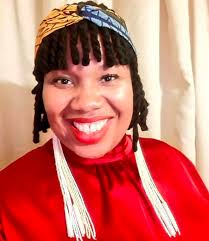 probably the time to break from studies, our first “Saturday Student” in the Mid-Month series is Kolisa Yola Sinyanya or for those who are familiar with Twitter,
probably the time to break from studies, our first “Saturday Student” in the Mid-Month series is Kolisa Yola Sinyanya or for those who are familiar with Twitter, 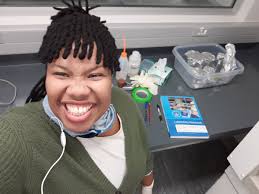 She is a PhD candidate in Oceanography at the University of Cape Town (UCT). Her PhD research is part of a growing body of work that critically examines bio-geochemical cycling in the ocean, particularly regions that are currently under-sampled. The research aims involve exploring phytoplankton community dynamics and microbe-nutrient interactions in the Indian Ocean, including subtropical and Southern Ocean waters. To date, Kolisa has been awarded the Advancing Womxn Fellowship in the Department of Oceanography awarded under the “For womxn by womxn: conducting research in a field in which womxn are in short supply” category of a new initiative at UCT championed by the Office of the Vice-Chancellor. She is one of the researchers who were on 5-week cruise to Marion Island in the Sub-Antarctic Indian Ocean in 2017.
She is a PhD candidate in Oceanography at the University of Cape Town (UCT). Her PhD research is part of a growing body of work that critically examines bio-geochemical cycling in the ocean, particularly regions that are currently under-sampled. The research aims involve exploring phytoplankton community dynamics and microbe-nutrient interactions in the Indian Ocean, including subtropical and Southern Ocean waters. To date, Kolisa has been awarded the Advancing Womxn Fellowship in the Department of Oceanography awarded under the “For womxn by womxn: conducting research in a field in which womxn are in short supply” category of a new initiative at UCT championed by the Office of the Vice-Chancellor. She is one of the researchers who were on 5-week cruise to Marion Island in the Sub-Antarctic Indian Ocean in 2017.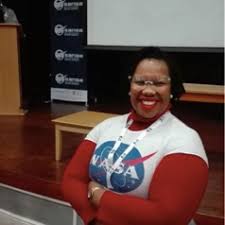 in effective science communication through public speaking, scientific writing and television features. In February of 2020, she presented one of her PhD chapters at Ocean Sciences Meeting in San Diego, USA. Towards the end of 2019, the new
in effective science communication through public speaking, scientific writing and television features. In February of 2020, she presented one of her PhD chapters at Ocean Sciences Meeting in San Diego, USA. Towards the end of 2019, the new 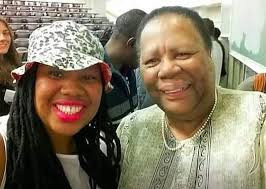 She has taken part in several science communication activities, including
She has taken part in several science communication activities, including 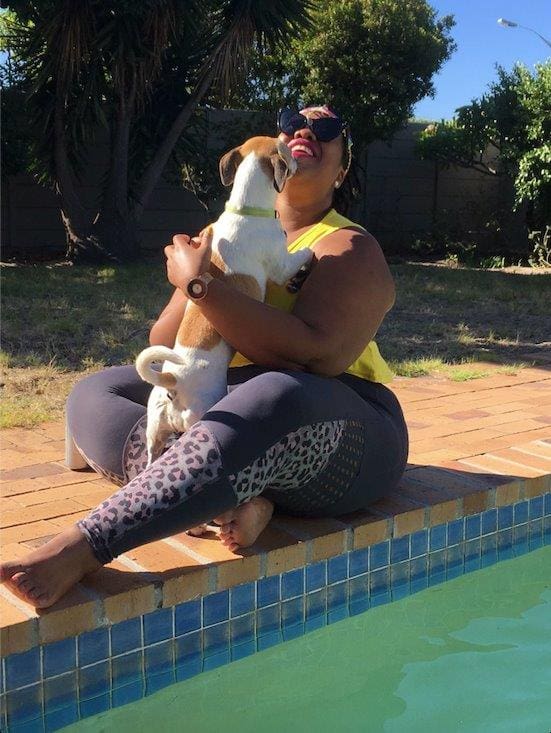

 freelance and volunteer work for SANAP. Alexander Oelofse is becoming a well-known name within the SANAP community. His
freelance and volunteer work for SANAP. Alexander Oelofse is becoming a well-known name within the SANAP community. His 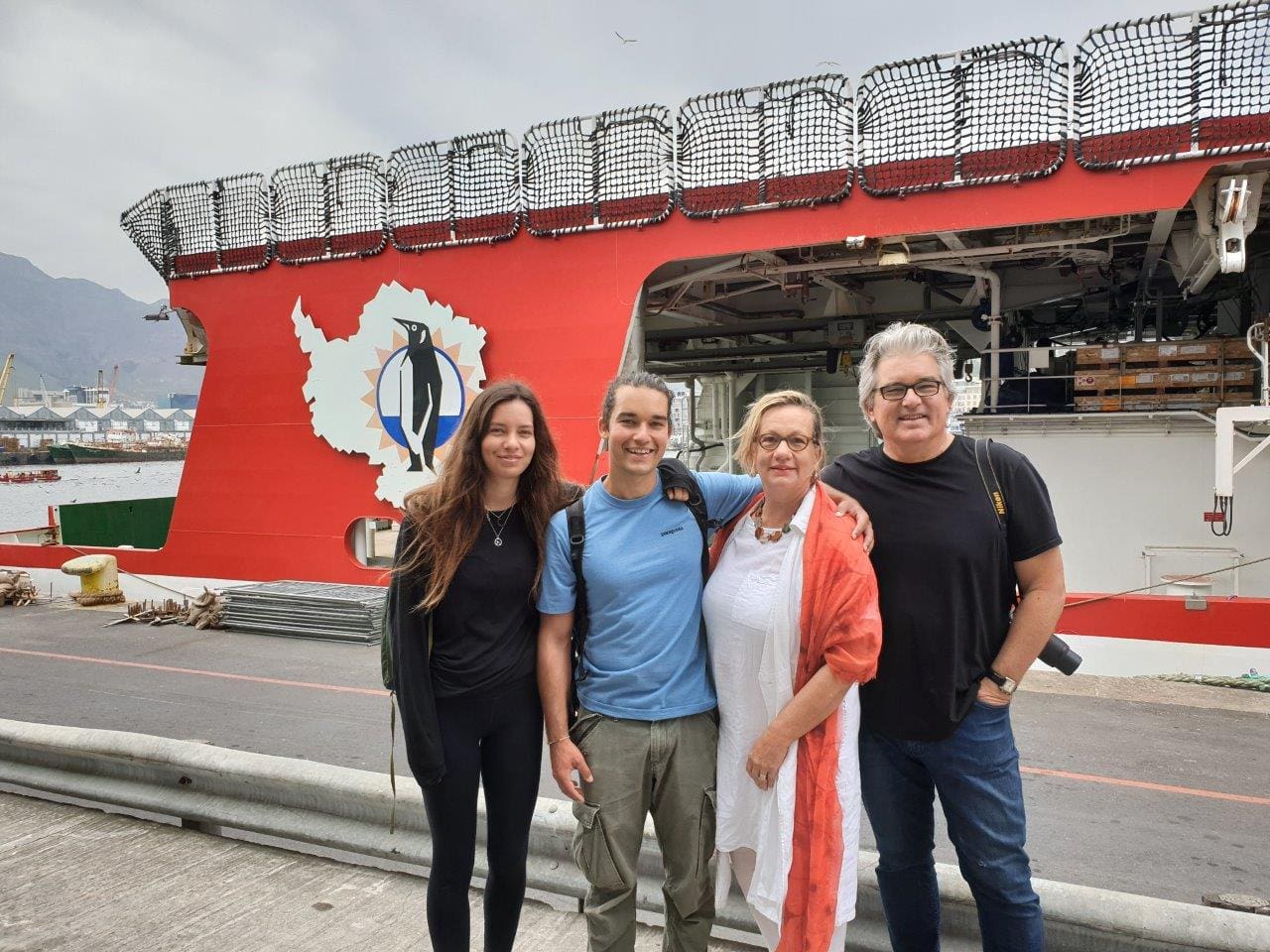 realized that as freelancer he can be of great service to the community and to
realized that as freelancer he can be of great service to the community and to 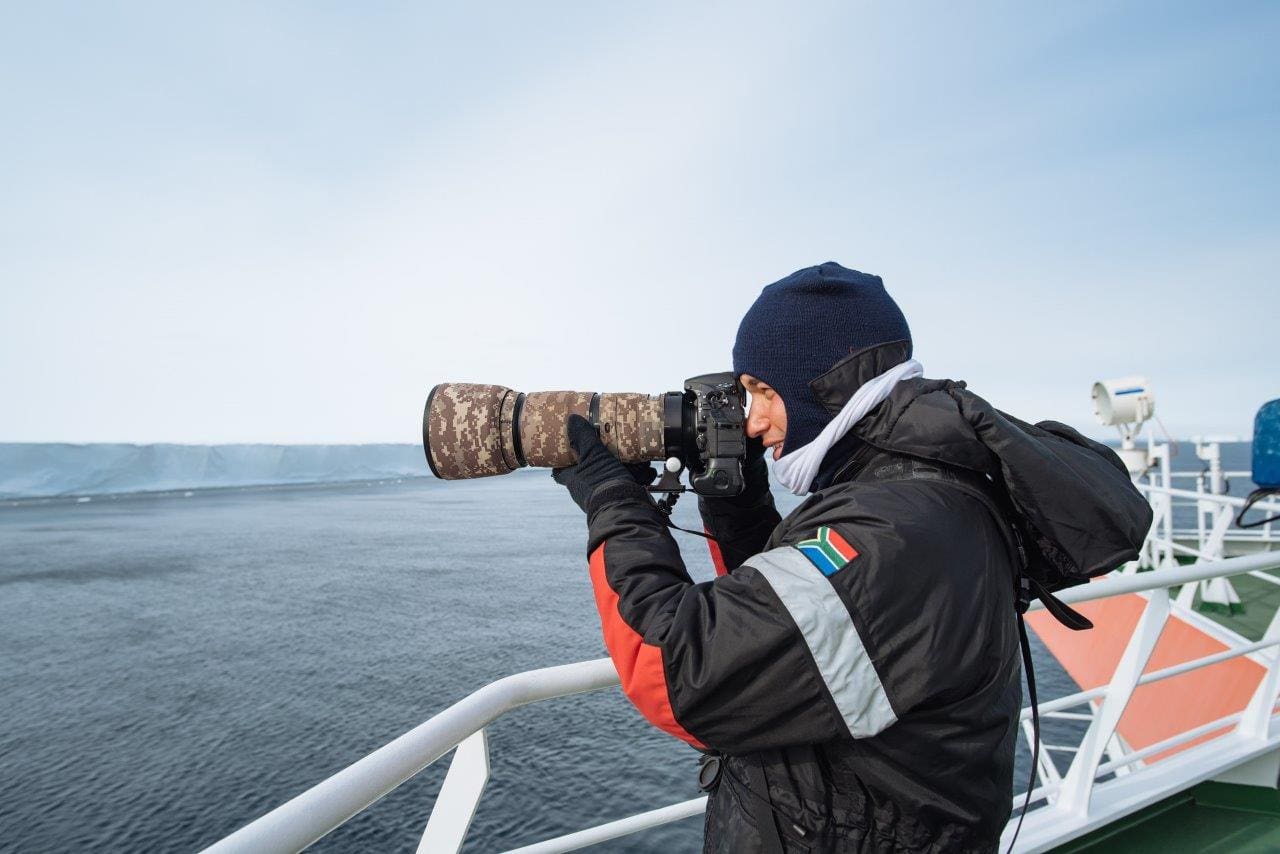 that I would want to be in, or surrounded, by the ocean as much as possible. I wanted to study marine biology for a long time. Until job shadowing a marine biologist and realising much of the work would be lab-based. I couldn’t imagine that for myself. I then decided to pursue my other passion; photography. Being a member of the photographic society in high school sparked my interest. This led to me studying
that I would want to be in, or surrounded, by the ocean as much as possible. I wanted to study marine biology for a long time. Until job shadowing a marine biologist and realising much of the work would be lab-based. I couldn’t imagine that for myself. I then decided to pursue my other passion; photography. Being a member of the photographic society in high school sparked my interest. This led to me studying  While at University I already started trying to find a way onboard the S.A. Agulhas II. I had to see this stark, extreme and yet breathtakingly beautiful landscape for myself. It took a few years of applying, without succeeding, until I could get onboard the SEAmester III as a lecturer after my studies. Onboard students from various universities around South Africa get the opportunity to experience oceanographic research at its best, out in the field, onboard the
While at University I already started trying to find a way onboard the S.A. Agulhas II. I had to see this stark, extreme and yet breathtakingly beautiful landscape for myself. It took a few years of applying, without succeeding, until I could get onboard the SEAmester III as a lecturer after my studies. Onboard students from various universities around South Africa get the opportunity to experience oceanographic research at its best, out in the field, onboard the 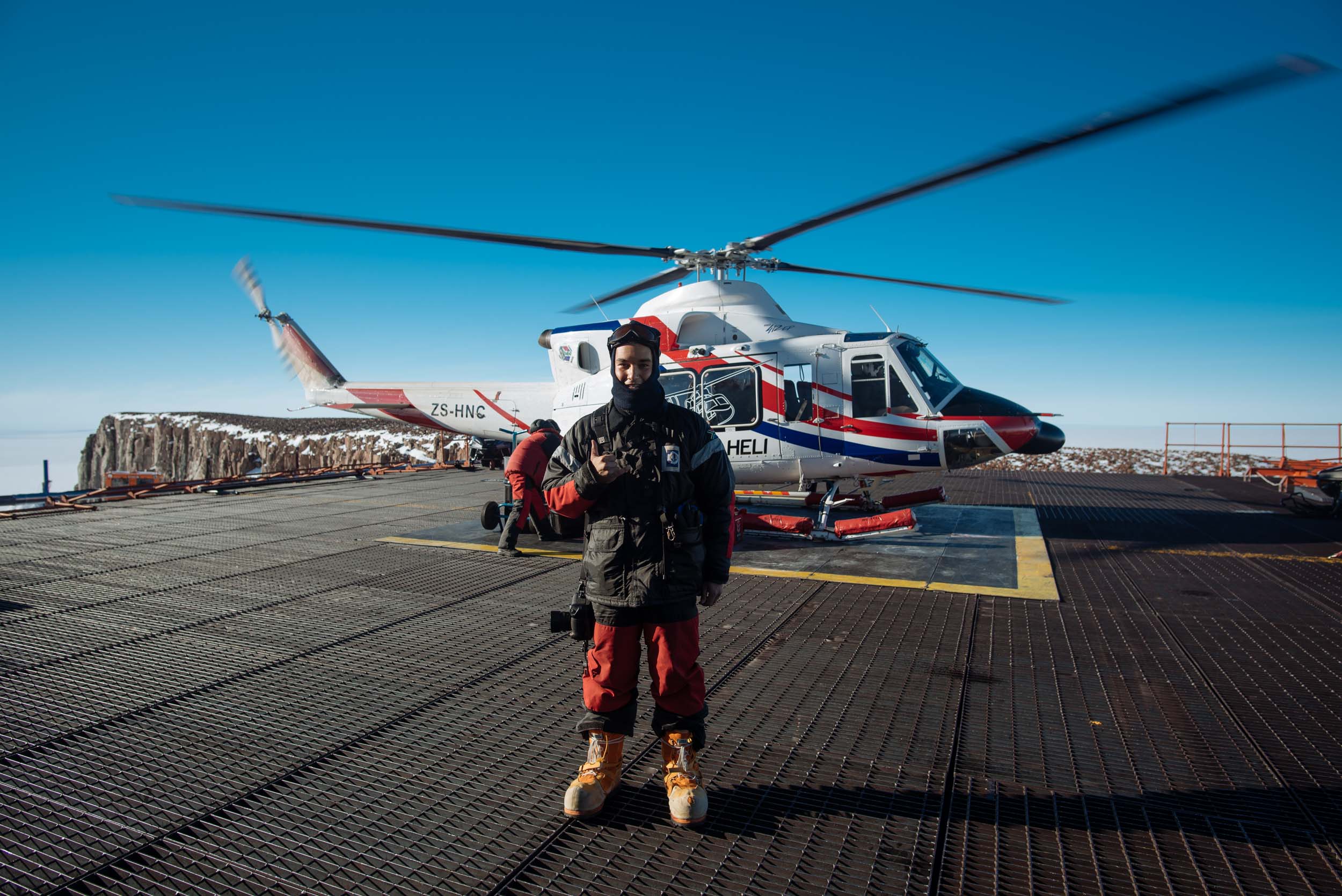 He departed on the first leg of
He departed on the first leg of 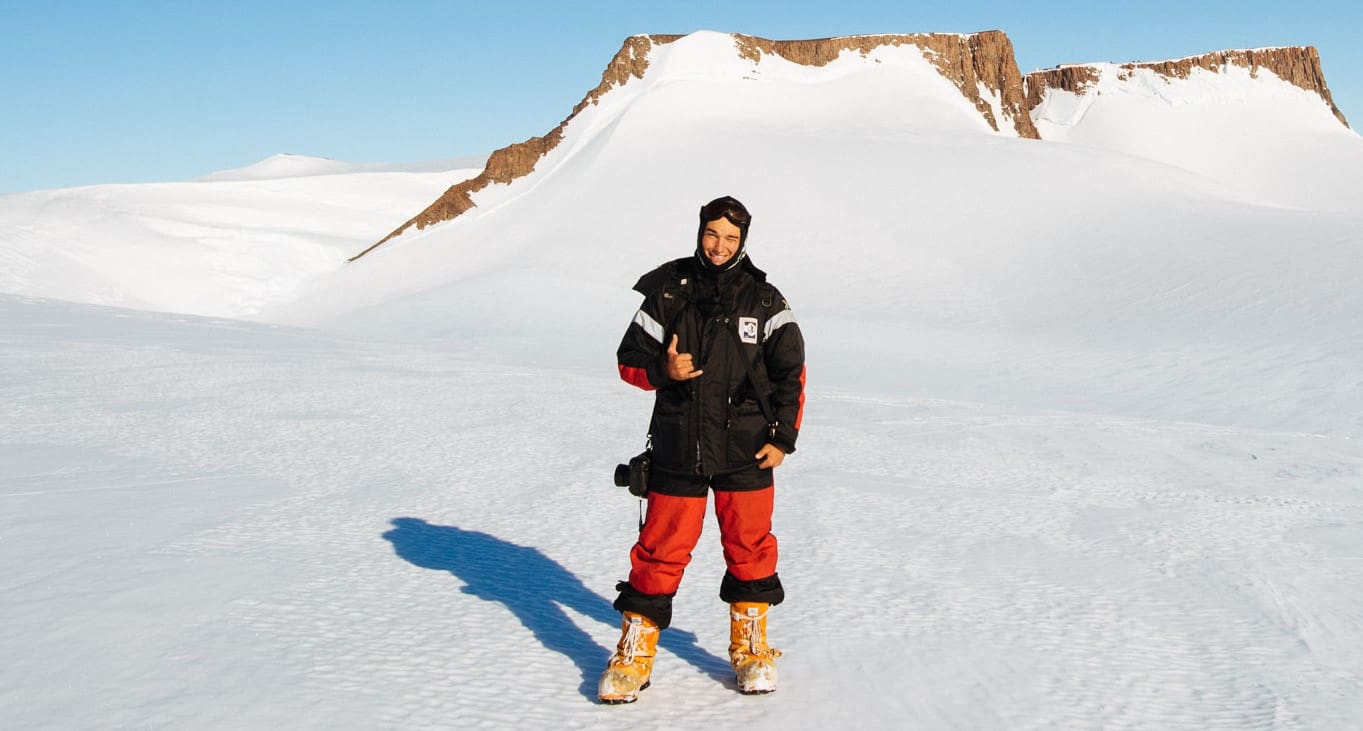 “Seeing the ice shelf for the first time left me speechless. I became quite emotional, realising my dream had come true”.
“Seeing the ice shelf for the first time left me speechless. I became quite emotional, realising my dream had come true”. 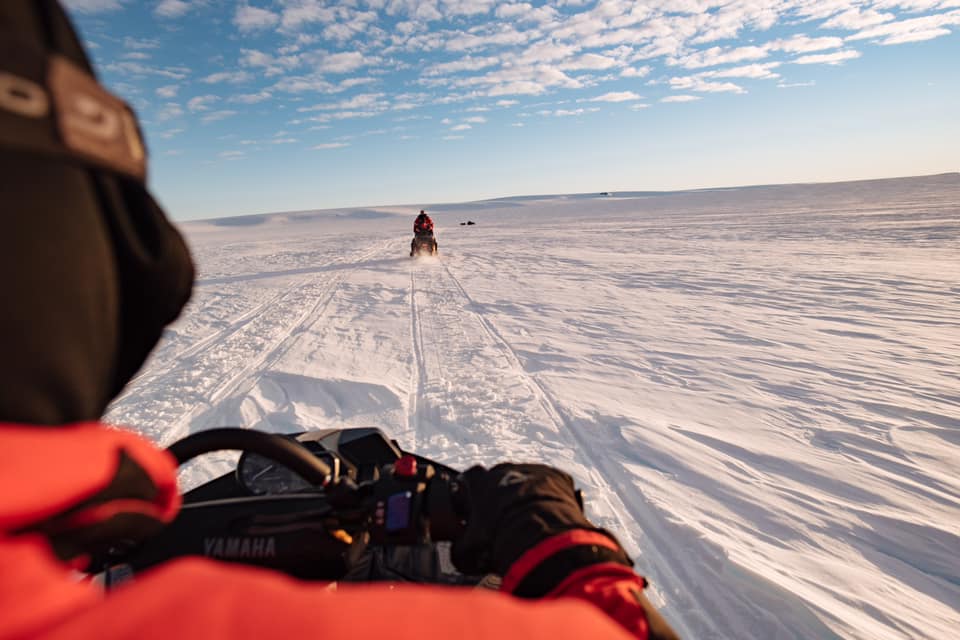 “One of my highlights was getting to sit on the back of a snowmobile and traverse the snowy landscapes. Being the passenger allowed me to, despite the icy breeze, absorb the sublime landscapes that we passed through. This image was captured at 02:00 am. You could see the sun dip ever so slightly but never setting. I could get used to that. It made life seem endless, like there was no rush”
“One of my highlights was getting to sit on the back of a snowmobile and traverse the snowy landscapes. Being the passenger allowed me to, despite the icy breeze, absorb the sublime landscapes that we passed through. This image was captured at 02:00 am. You could see the sun dip ever so slightly but never setting. I could get used to that. It made life seem endless, like there was no rush”
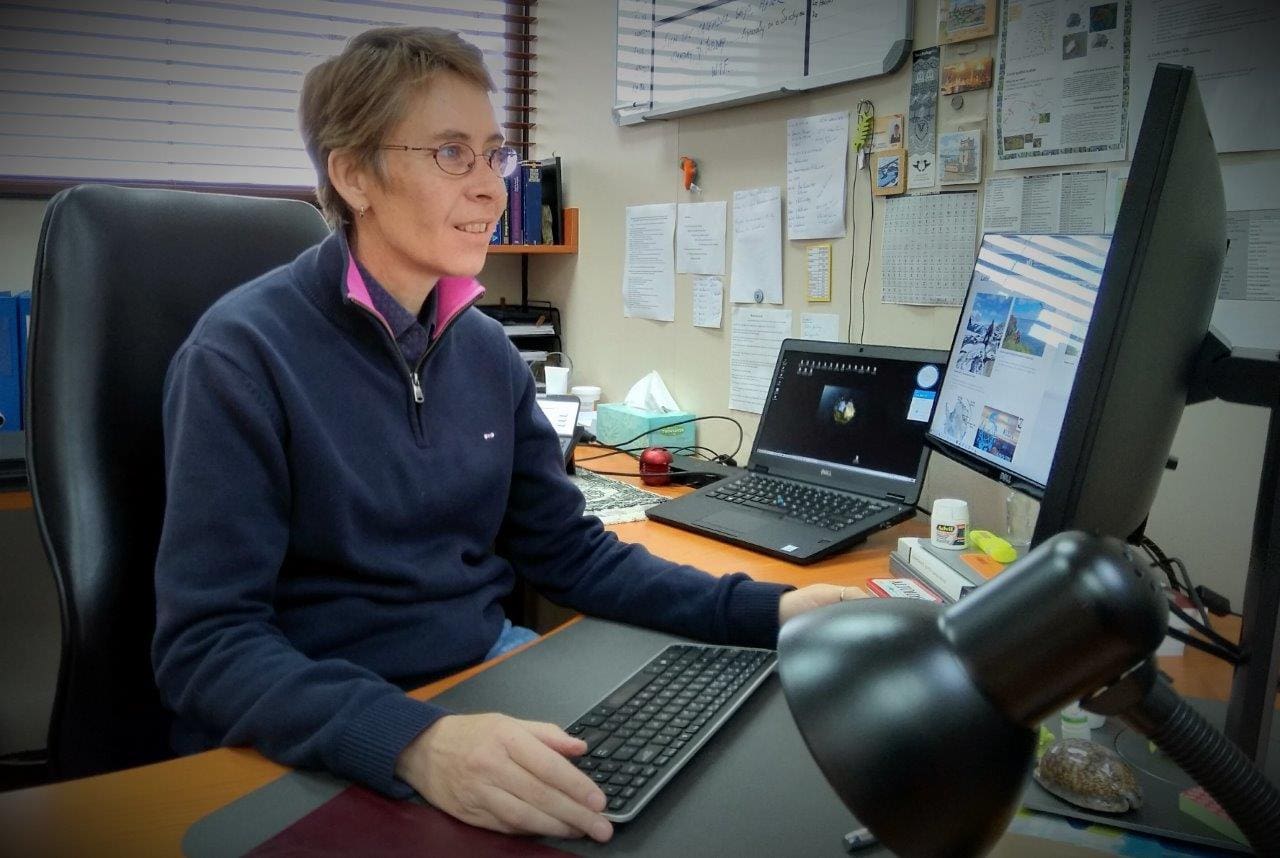 and became a
and became a 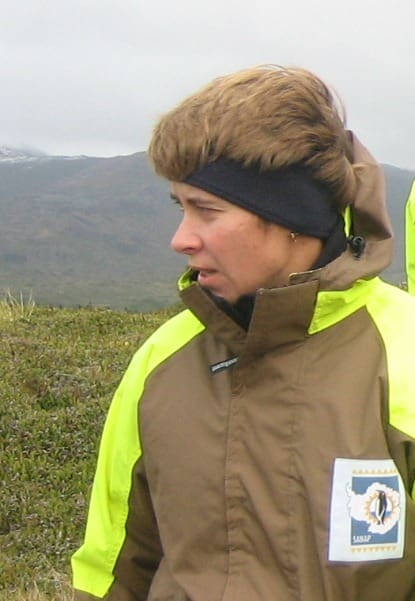 Islands since 2004 and have been fortunate to work with some of the legends as well as bright upcoming researchers (then students, now fully established and leading their own research groups). For my sins, I was appointed as Chief shore-based Scientist in 2006 (the first time that a woman held this position), and managed to get all people to relevant huts on time, even though we almost had to put together a rescue party to retrieve Valdon Smith and Sarette Slabber from Mixed Pickle (typical Marion Island bad weather meant that they could not walk over Azorella Kop). Thankfully the weather cleared, and all shore-based people made it back to the SA Agulhas I.
Islands since 2004 and have been fortunate to work with some of the legends as well as bright upcoming researchers (then students, now fully established and leading their own research groups). For my sins, I was appointed as Chief shore-based Scientist in 2006 (the first time that a woman held this position), and managed to get all people to relevant huts on time, even though we almost had to put together a rescue party to retrieve Valdon Smith and Sarette Slabber from Mixed Pickle (typical Marion Island bad weather meant that they could not walk over Azorella Kop). Thankfully the weather cleared, and all shore-based people made it back to the SA Agulhas I.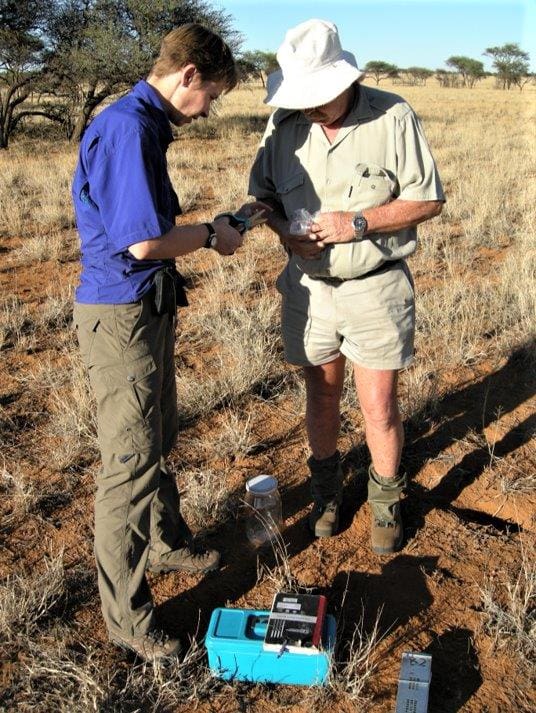 flowers and pollen, and how do they get back to their hives? Are they really all female? Why are some species so successful while others are continuously threatened and faced with extinction; especially considering that our world is changing much faster than ever before?
flowers and pollen, and how do they get back to their hives? Are they really all female? Why are some species so successful while others are continuously threatened and faced with extinction; especially considering that our world is changing much faster than ever before? 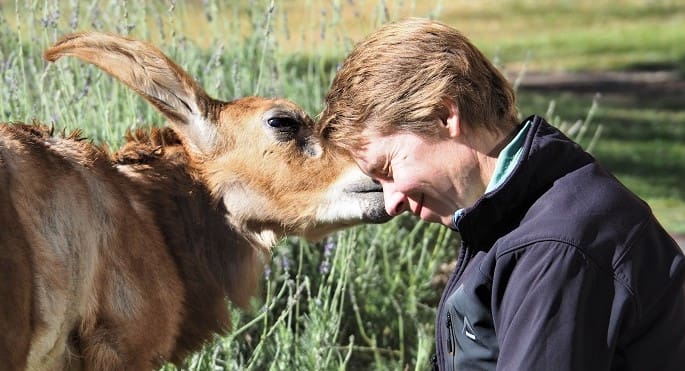
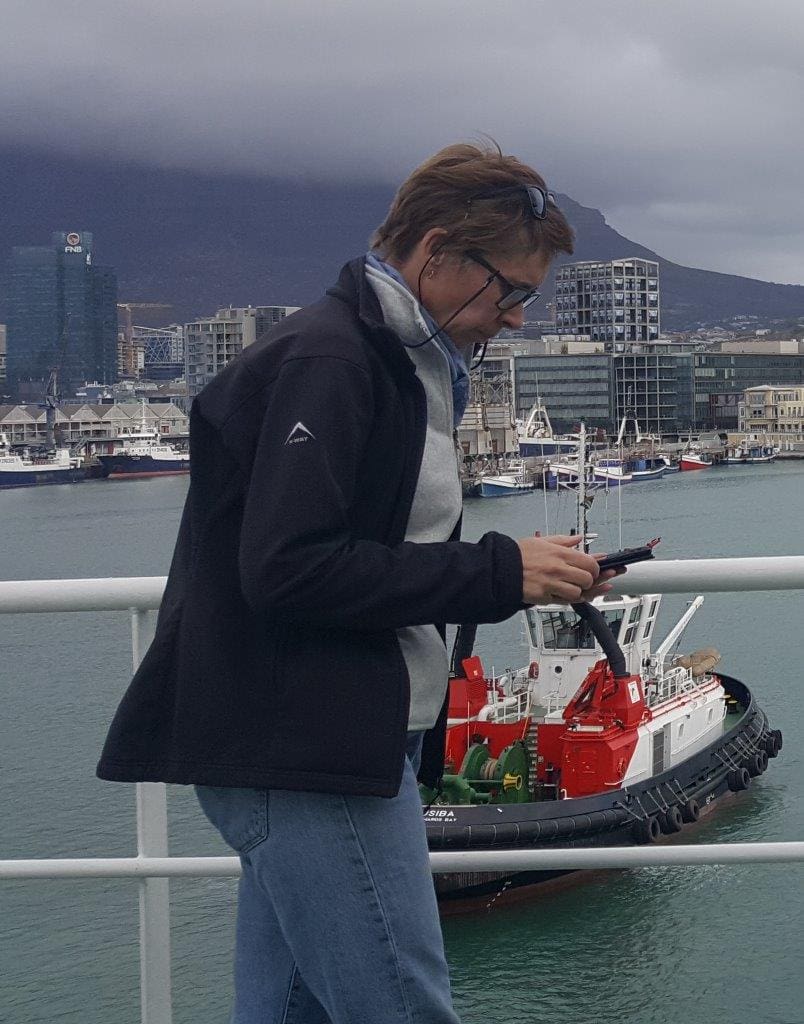 or others impose on us; and it is crucial that we break through these (non-real) boundaries. STEM fields are a case in hand. This is especially true for woman, who traditionally were considered homemakers or child-carers. In STEM specifically, fields such as mathematics, physics and engineering, and traditionally more field-based disciplines such as zoology, botany, or oceanography, are seen as more suited to men (either because women were not traditionally considered as analytically strong, capable to work in the field, or for that matter, be away from home for any period of time). It is critical that any person (both men and women) should carefully consider what they enjoy, what their specific strengths are (be that a STEM career for a woman, or as a child carer / homemaker for a man), and then pursue that with all their strength and passion. Personally, I was initially directed into a field that I had no interest in (because I could not answer questions asked regarding where I would work if my husband lived in a small town), and from a personal perspective I strongly urge and support woman that want to step out of the “beaten track”, i.e., what is typically expected from you by society, and follow what they are passionate about.
or others impose on us; and it is crucial that we break through these (non-real) boundaries. STEM fields are a case in hand. This is especially true for woman, who traditionally were considered homemakers or child-carers. In STEM specifically, fields such as mathematics, physics and engineering, and traditionally more field-based disciplines such as zoology, botany, or oceanography, are seen as more suited to men (either because women were not traditionally considered as analytically strong, capable to work in the field, or for that matter, be away from home for any period of time). It is critical that any person (both men and women) should carefully consider what they enjoy, what their specific strengths are (be that a STEM career for a woman, or as a child carer / homemaker for a man), and then pursue that with all their strength and passion. Personally, I was initially directed into a field that I had no interest in (because I could not answer questions asked regarding where I would work if my husband lived in a small town), and from a personal perspective I strongly urge and support woman that want to step out of the “beaten track”, i.e., what is typically expected from you by society, and follow what they are passionate about. I am currently involved in a number of larger projects which aim to understand how species (individuals / populations) respond to change. One such project is on sub-Antarctic Marion Island (funded through the South African National Antarctic Programme), where we are assembling the full genomes of a number of macroinvertebrate species, with the ultimate aim to understand genes under selection, and how biotic and abiotic factors shape the genetic diversity on oceanic islands. In South Africa, and in collaboration with national (SANBI) and international partners (an NSF/NRF funded project), we are investigating how reptile species adapt to changing and transformed landscapes, and what the downstream impacts are on their genes, morphology and behaviour. Across the African continent, and in collaboration with the Research Centre in Biodiversity and Genetic Resources (Portugal), we are documenting the spatial genetic patterns in a number of economically important larger antelope species (such as roan- and sable antelope); our work here directly informs South African policies on translocations.
I am currently involved in a number of larger projects which aim to understand how species (individuals / populations) respond to change. One such project is on sub-Antarctic Marion Island (funded through the South African National Antarctic Programme), where we are assembling the full genomes of a number of macroinvertebrate species, with the ultimate aim to understand genes under selection, and how biotic and abiotic factors shape the genetic diversity on oceanic islands. In South Africa, and in collaboration with national (SANBI) and international partners (an NSF/NRF funded project), we are investigating how reptile species adapt to changing and transformed landscapes, and what the downstream impacts are on their genes, morphology and behaviour. Across the African continent, and in collaboration with the Research Centre in Biodiversity and Genetic Resources (Portugal), we are documenting the spatial genetic patterns in a number of economically important larger antelope species (such as roan- and sable antelope); our work here directly informs South African policies on translocations.


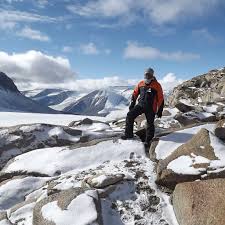 as our first Monday Man.
as our first Monday Man.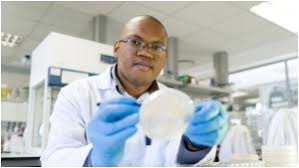 There are very few careers which allow you to generate new knowledge and acquire new insights on a daily basis. Working as a scientist allows me to be at the very cutting edge of knowledge generation
There are very few careers which allow you to generate new knowledge and acquire new insights on a daily basis. Working as a scientist allows me to be at the very cutting edge of knowledge generation  within my field. I love being able to work in a team of scientist working on exciting projects. I get to mentor a range of students, from undergraduates to PhD, all with unique perspectives and insights. As a SANAP researcher, my work allows me access to unique study sites and locations and allows me to work on topics very few people have access to.
within my field. I love being able to work in a team of scientist working on exciting projects. I get to mentor a range of students, from undergraduates to PhD, all with unique perspectives and insights. As a SANAP researcher, my work allows me access to unique study sites and locations and allows me to work on topics very few people have access to.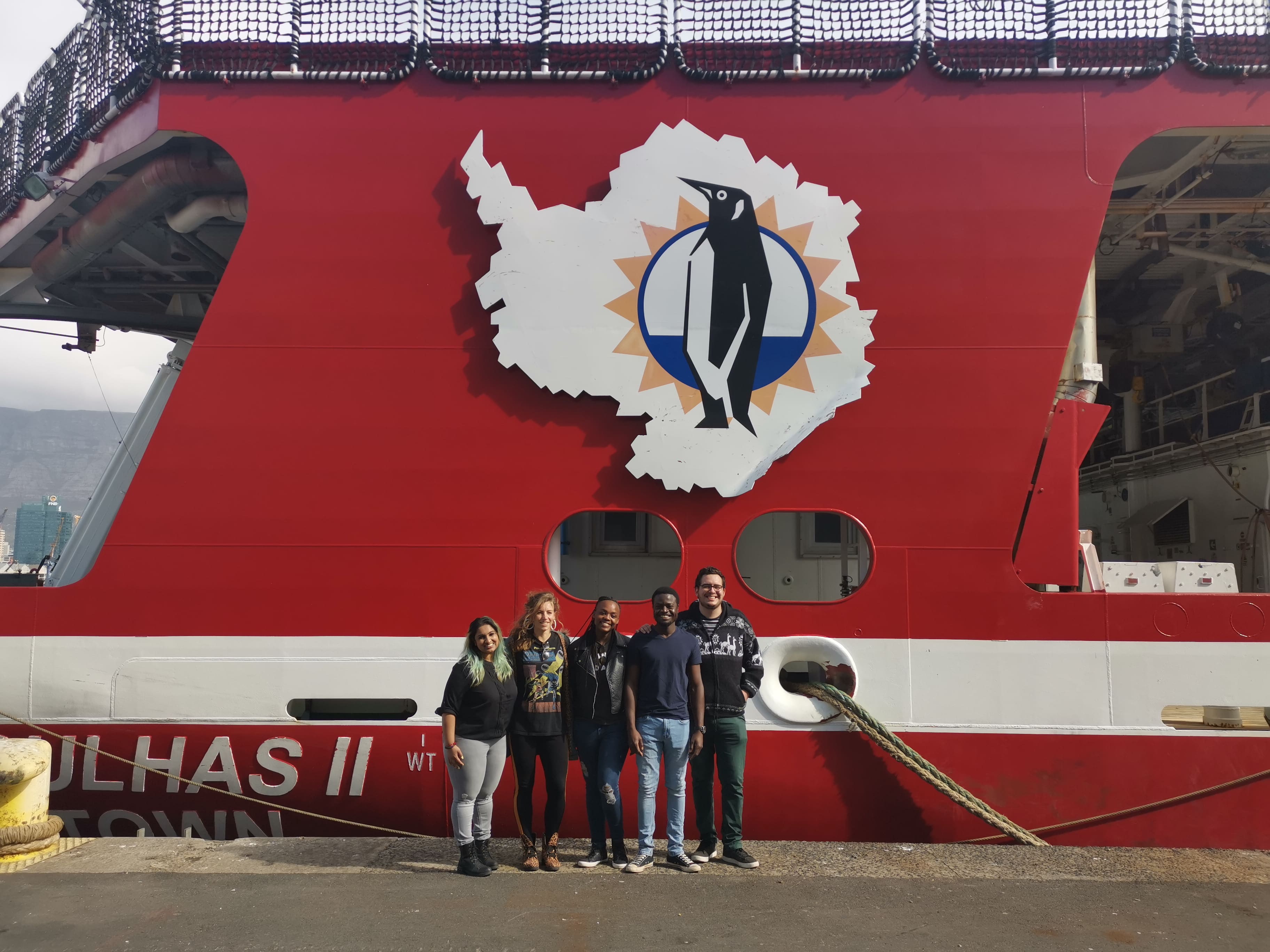
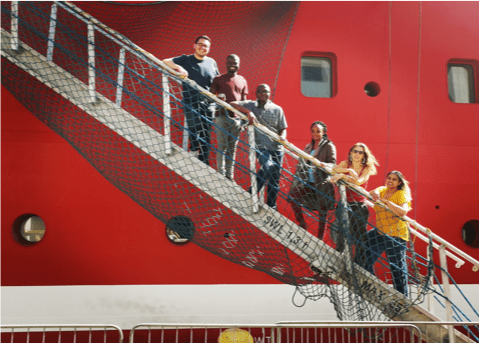
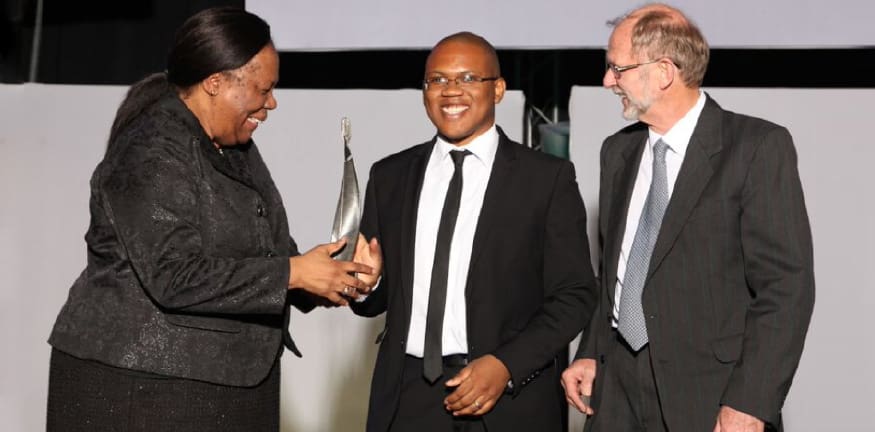 Dr Thulani Makhalanyane was the 2014/15 winner of a TW Kambule-
Dr Thulani Makhalanyane was the 2014/15 winner of a TW Kambule-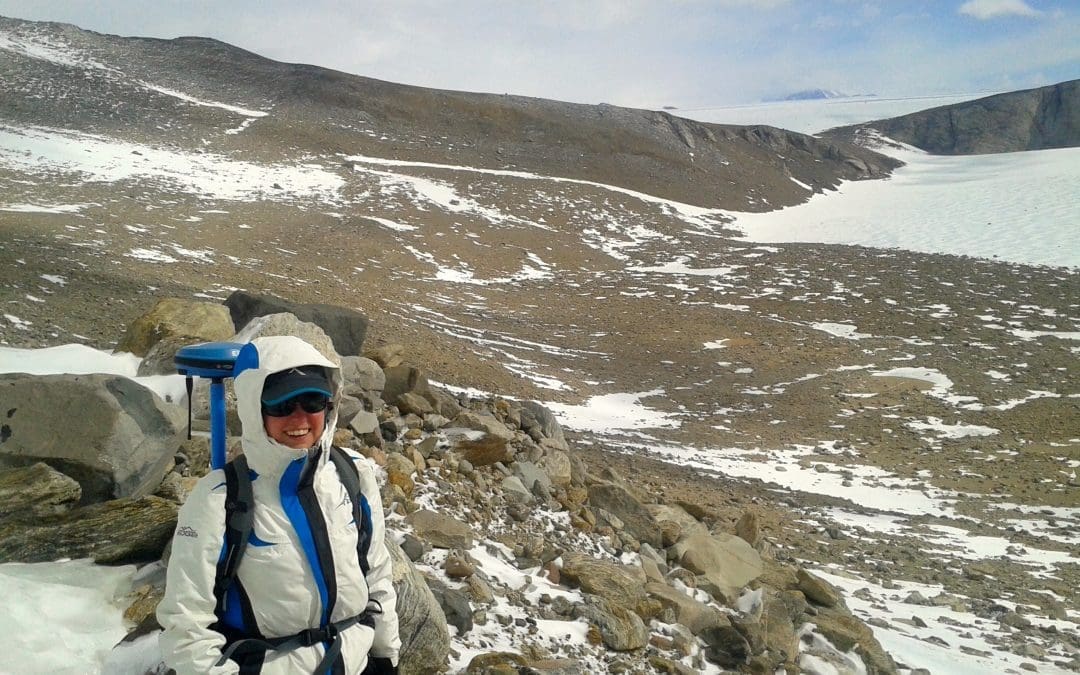
 of Marion Island in the sub-Antarctic. Her research is on the impact of various physical factors on landscape change, for example: animals (seals in particular) on soil properties and vegetation community composition; ice, above or below the ground surface. Geomorphology or better known as Physical Geography is her area(s) of Interest and more specifically, the processes behind
of Marion Island in the sub-Antarctic. Her research is on the impact of various physical factors on landscape change, for example: animals (seals in particular) on soil properties and vegetation community composition; ice, above or below the ground surface. Geomorphology or better known as Physical Geography is her area(s) of Interest and more specifically, the processes behind 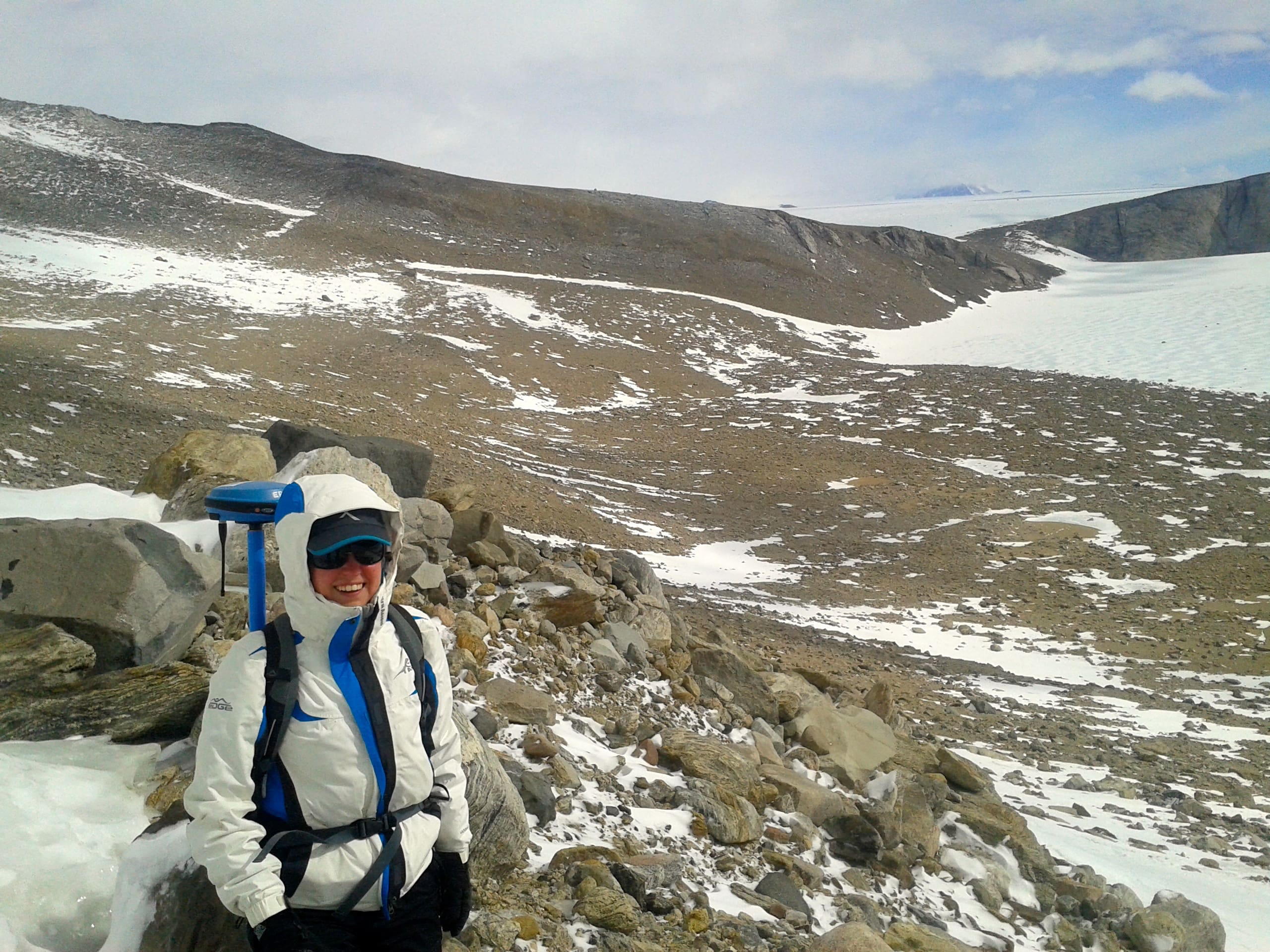 Periglacial Landforms and to a lesser extent Biogeomorphology. She is fascinated by cold and mountainous places, and thus prefer to work in environments like the High Drakensberg, Subantarctic Marion Island or Antarctica. Liezel is a
Periglacial Landforms and to a lesser extent Biogeomorphology. She is fascinated by cold and mountainous places, and thus prefer to work in environments like the High Drakensberg, Subantarctic Marion Island or Antarctica. Liezel is a  research is part of a growing body of work that critically examines biogeochemical cycling in the ocean, particularly regions that are currently under-sampled. The research aims involve exploring phytoplankton community dynamics and microbe-nutrient interactions in the Indian Ocean, including subtropical and Southern
research is part of a growing body of work that critically examines biogeochemical cycling in the ocean, particularly regions that are currently under-sampled. The research aims involve exploring phytoplankton community dynamics and microbe-nutrient interactions in the Indian Ocean, including subtropical and Southern  Ocean waters. To-date, Kolisa has been awarded the Advancing Womxn Fellowship in the Department of Oceanography. She is a Black Women in South Africa Fellows of 2019. In 2019 she was nominated as one of the Inspiring Fifty Women in STEM South Africa. Kolisa has a passion for learning science and for sharing her science and this PhD programme has allowed her to engage in effective science communication through both public speaking and scientific writing. Kolisa’s work has also been documented in the academic communication magazine, The Conversation Africa. Earlier this year she was invited to be on the “New Voices” panel at the annual Nature, Environment and Wildlife Filmmakers Congress. Sinyanya is committed to increasing the visibility of women in STEM and to that end, she runs a blog called
Ocean waters. To-date, Kolisa has been awarded the Advancing Womxn Fellowship in the Department of Oceanography. She is a Black Women in South Africa Fellows of 2019. In 2019 she was nominated as one of the Inspiring Fifty Women in STEM South Africa. Kolisa has a passion for learning science and for sharing her science and this PhD programme has allowed her to engage in effective science communication through both public speaking and scientific writing. Kolisa’s work has also been documented in the academic communication magazine, The Conversation Africa. Earlier this year she was invited to be on the “New Voices” panel at the annual Nature, Environment and Wildlife Filmmakers Congress. Sinyanya is committed to increasing the visibility of women in STEM and to that end, she runs a blog called  She has just been awarded the HJ Scoonbee medal for the best MSc Dissertation
She has just been awarded the HJ Scoonbee medal for the best MSc Dissertation  pressures on the organism and the genes that experience selection in response to environmental change. Her results highlighted complex spatial genetic patterns that could be driven by micro-habitat preferences and/or a fitness funnel driven by local adaptations. This complexity illustrates that individuals respond to environmental changes. Her results may bring about far-reaching implications for conservation management on Marion Island, highlighting the importance of considering fine-scale evolutionary processes in management plans. In essence, her results emphasize that conservation efforts are best addressed in a ‘bottom-up’ approach as opposed to a ‘top-down’ approach, which is the case for (Southern Ocean) biodiversity. She is passionate about her work and is extremely fond of the world down south. Daniela loves everything about nature, the outdoors, and sports, particularly soccer, of which she is part of a ladies team in a provincial league. She enjoys spending time with her friends and family, and in her free time, she enjoys the hobby of fishkeeping.
pressures on the organism and the genes that experience selection in response to environmental change. Her results highlighted complex spatial genetic patterns that could be driven by micro-habitat preferences and/or a fitness funnel driven by local adaptations. This complexity illustrates that individuals respond to environmental changes. Her results may bring about far-reaching implications for conservation management on Marion Island, highlighting the importance of considering fine-scale evolutionary processes in management plans. In essence, her results emphasize that conservation efforts are best addressed in a ‘bottom-up’ approach as opposed to a ‘top-down’ approach, which is the case for (Southern Ocean) biodiversity. She is passionate about her work and is extremely fond of the world down south. Daniela loves everything about nature, the outdoors, and sports, particularly soccer, of which she is part of a ladies team in a provincial league. She enjoys spending time with her friends and family, and in her free time, she enjoys the hobby of fishkeeping.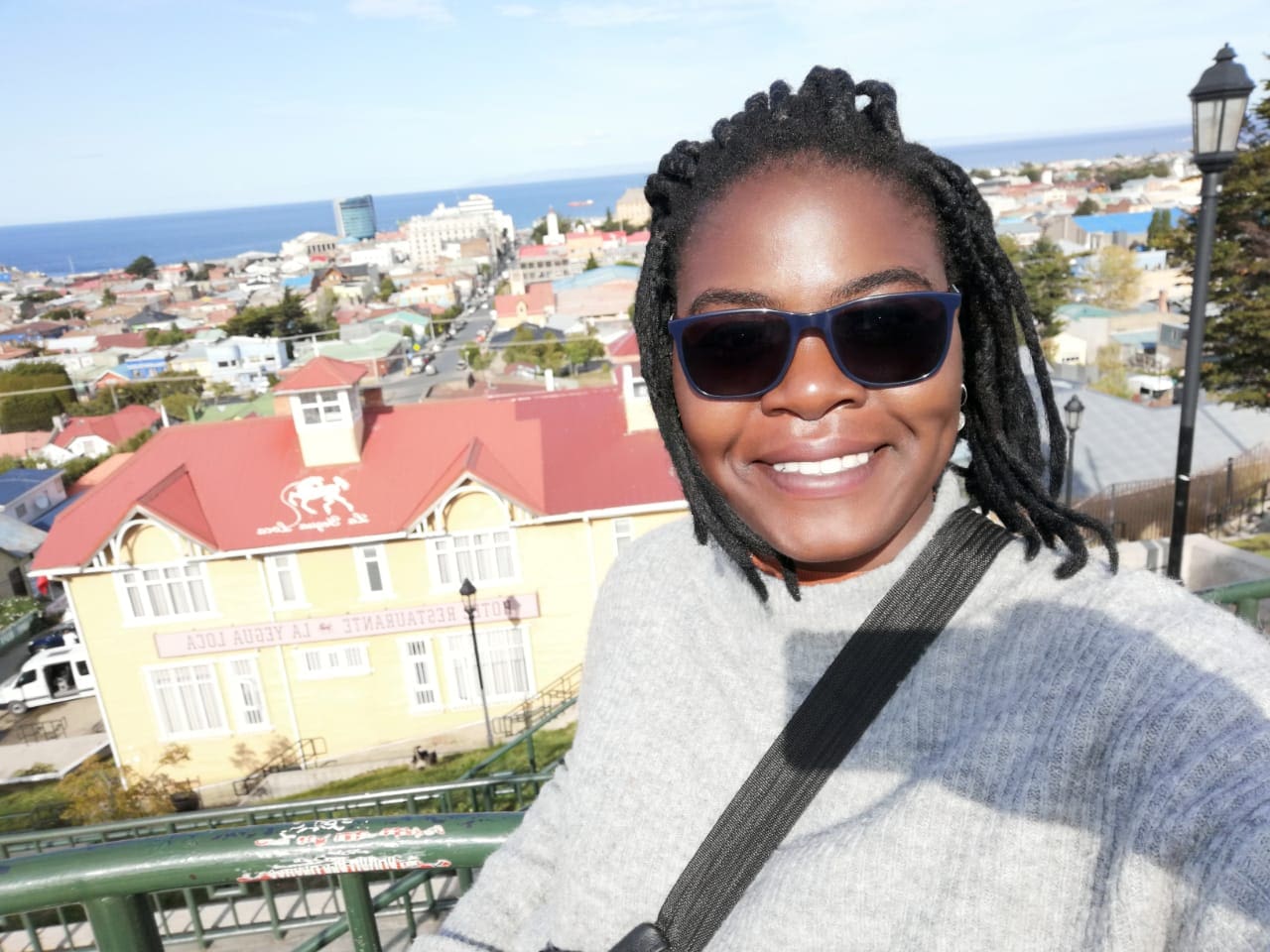 She is currently a Capetonian and studies towards a Masters in Physical/Chemical Oceanography, through the Nelson Mandela University. She was one of 41 students that qualified for this year’s SEAmester cruise and won the prize for best student on-board. During the
She is currently a Capetonian and studies towards a Masters in Physical/Chemical Oceanography, through the Nelson Mandela University. She was one of 41 students that qualified for this year’s SEAmester cruise and won the prize for best student on-board. During the  ambition that will not be held back and we are convinced that she will become an Antarctic ambassador at heart and further the connection between Cape Town and the Antarctic, as part of the network of gateway cities toward the Antarctic. Her expectation for the expedition before she left : “I look forward especially to interacting with the other young leaders and researchers chosen for this expedition to possibly establish connections. As an aspiring Oceanographer, Antarctica is an important milestone in my career, it represents the pinnacle of science, cooperation and diplomacy. To be the South African ambassador for this project is a privilege and is extremely humbling.” Rudzi arrived back in Cape Town on 28 February 2020 from the first ACYE
ambition that will not be held back and we are convinced that she will become an Antarctic ambassador at heart and further the connection between Cape Town and the Antarctic, as part of the network of gateway cities toward the Antarctic. Her expectation for the expedition before she left : “I look forward especially to interacting with the other young leaders and researchers chosen for this expedition to possibly establish connections. As an aspiring Oceanographer, Antarctica is an important milestone in my career, it represents the pinnacle of science, cooperation and diplomacy. To be the South African ambassador for this project is a privilege and is extremely humbling.” Rudzi arrived back in Cape Town on 28 February 2020 from the first ACYE




